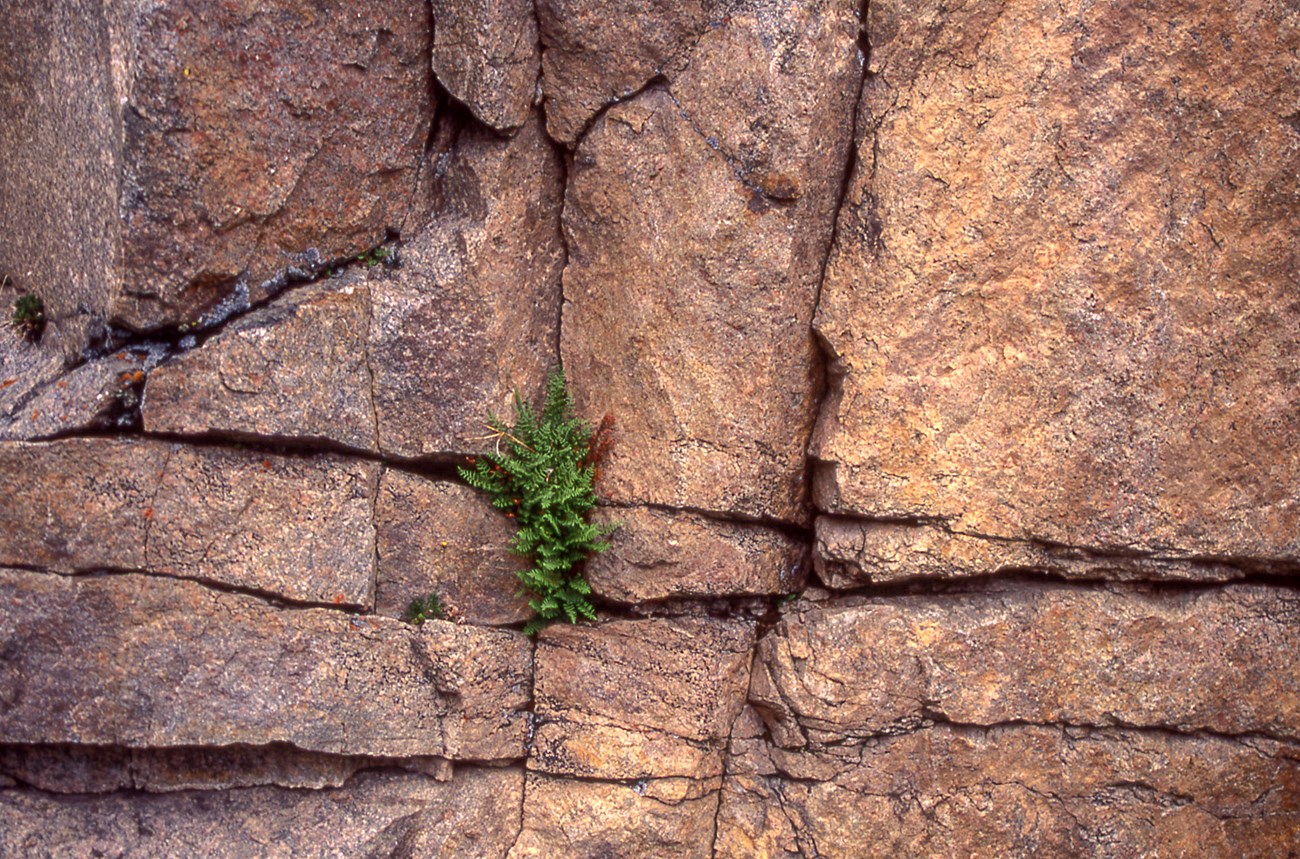
NPS photo by Jim Peaco.
Weathering includes two processes that occur at or near Earth's surface and work in concert to decompose rocks. Both processes occur in place—No movement of sediment is involved in weathering.
Chemical Weathering
Chemical weathering involves a chemical change in at least some of the minerals within a rock.
Dissolution
Dissolution, or chemical solution, is a chemical weathering process in which the combination of water and acid slowly removes mineral compounds from solid bedrock and carries them away in liquid solution.
Mechanical or Physical Weathering
Mechanical weathering involves physically breaking rocks into fragments without changing the chemical make-up of the individual minerals that make up the rock. Mechanical weathering includes processes such as water in cracks freezing and expanding, or changes in temperature that expand and shrink individual minerals enough to break them apart.
Featured Video—Black Canyon of the Gunnison National Park
-
Melting Into Spring
Spring is a good time to notice the subtle yet surprisingly powerful forces of geologic change at Black Canyon of the Gunnison National Park.
- Duration:
- 1 minute, 44 seconds
Related Links
Last updated: January 26, 2023

